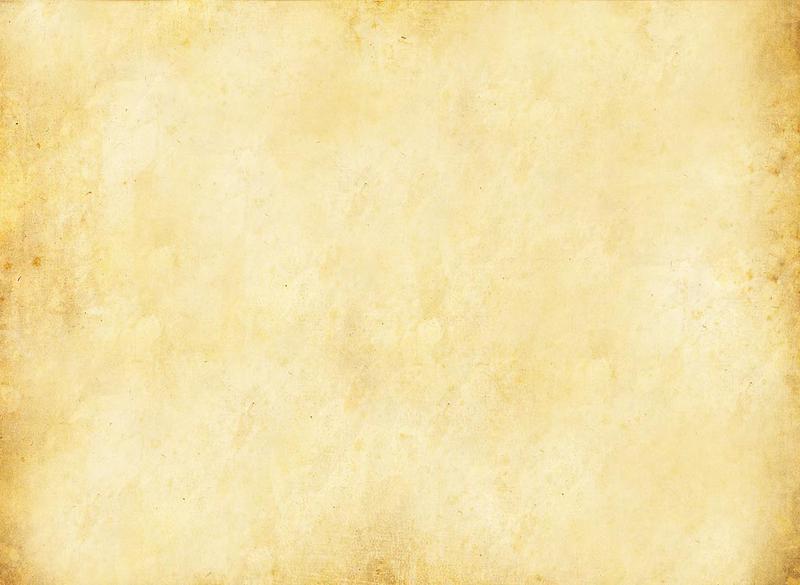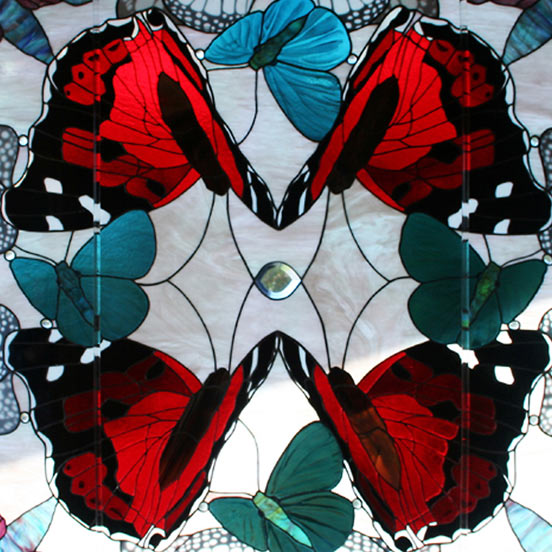Email: Calley@CalleyO'Neill.com
The Jewels of Hawai'i, 2005 (5 ½’ square) public stained glass mandala window with kiln fired glaze painting. This work is a three-way collaboration with photographer and butterfly expert, Jim Denny and stained glass artisan Lamar Yoakum at Malama Pono Center, Kamuela, Hawai’i.
Hawai’i has just two endemic species of butterflies:
Pulelehua (which now is the word for all butterflies) a monarch known commonly as The Kamehameha butterfly and the second, much smaller one is the Hawaiian Blue butterfly, also known as the Koa butterfly, or Blackburn’s little blue butterfly. Unfamiliar to most residents and visitors, the two butterflies are forest and mountain dwellers rarely seen by anyone, save avid hikers and keen observers of nature in native upland forests.
Pulelehua originally referred to the Kamehameha butterfly and is now the world for all butterflies. Pulelo means to float or to undulate in the air, and lehua is the famous blossom of the ‘Ohia lehua tree (Metrosideros polymorpha): thus the name means one that floats through the air from one lehua blossom to another.
The Jewels of Hawai'i
The window depicts the only two native and endemic butterflies of Hawai’i: a monarch known as The Kamehameha Lady or The Kamehameha Butterfly (Vanessa tameamea) and the much smaller, very rare Hawaiian Blue or Blackburn’s Blue, often called the Koa Butterfly (Udara blackburni). The Kamehameha is also known as Lepelepe-o-Hina sister of the fire goddess Pele, which translates to Hina’s fringe wing.
The official insect of the State of Hawai’i, the Kamehameha Butterfly is named after the last King of the sovereign Native Hawaiian monarchy. The 1878 scientific name is a somewhat amusing, inaccurate translation of the King’s name as it is written, Tameamea. The avid backpacker can see the Kamehameha Lady along mountain trails and forest openings on all the main Hawaiian Islands except Kaho'olawe. Its’ principal host plant is the native nettle, Mamaki (Pipturis albidus).
The elusive Hawaiian Blue’s main host is the mighty koa tree (acacia koa). They are joined in each corner by the extremely rare Fabulous Green Sphinx moth (Tinostoma smaragditis) Meyrick, 1899, about 3-1/2” wide, endemic to the Alaka’i Swamp on Kaua’i. Perhaps seven or eight individuals in the world have ever seen this creature. In this window, the sphinx represents the 1,200 moth species native to Hawai’i.
Also shown is the rare White Monarch called the Kona Morph, unique to the Big Island of Hawai’i. The lovely Kona Morph has distinctive dark sections of the margins of its dorsal forewings on a pure white ground. There is also an Oahu Morph with more black and a Kaua’i Morph, which is brownish instead of white. The Hawaiian Blue has beautiful iridescent green scales underneath its wings, thus the name and bluish brown scales on the top.




